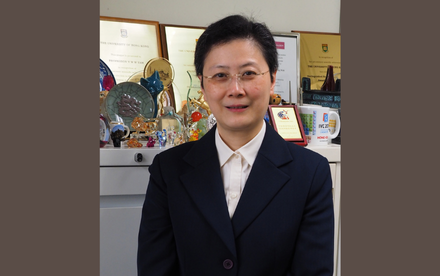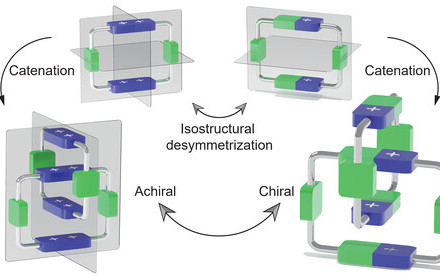15 May 2025
HKU Chemists Develop Breakthrough Material for Clean Energy Storage

Figure 1. Diagram illustrating the use of noncoplanar building blocks to construct mesoporous HOFs with aromatic pore chemistry, achieving record-large 3.6 nm pores.
A team of chemists at The University of Hong Kong (HKU) has made a breakthrough in materials chemistry that could change the way we store clean energy. Led by the late Nobel Laureate Professor Fraser Stoddart, the team developed RP-H200, a hydrogen-bonded organic framework (HOF) with the largest pores ever recorded in its category. This breakthrough could lead to advancements in clean energy storage, drug delivery, and environmental applications, and their research was recently published in the Journal of the American Chemical Society.
What Makes This Material Special?
Creating large pores in molecular crystals without compromising their stability has always been difficult. The HKU team succeeded by developing RP-H200, a unique structure made from noncoplanar organic molecules held together by hydrogen bonds, similar to how Lego works. With pores measuring 3.6 nanometers and a surface area comparable to one-third of a football field per gram, this material is exceptional at storing gases like methane and hydrogen, opening doors to new sustainable technologies.
How Was It Done?
The team, including Dr. Ruihua Zhang and Dr. Chun Tang, used a new design to create RP-H200. They engineered the molecules to form a double-walled, honeycomb-like structure with aromatic surfaces that improve gas storage. At normal room temperature and pressure, RP-H200 can store more methane than many current materials. It is also very stable in heat, solvents, and humid conditions, making it useful for practical applications.
Why Is This Important?
The large pores in RP-H200 make it perfect for storing important fuels like methane and hydrogen, which are crucial for clean energy vehicles. It could also help in delivering drugs to specific areas of the body or capturing carbon dioxide to fight climate change. Its ability to be reused and processed easily adds to its potential for sustainable technology.
“This research demonstrates a viable pathway for constructing robust mesoporous molecular crystals with diverse pore chemistries, paving the avenue for future applications,” said Dr Zhang.
Who Was Involved?
This milestone highlights the innovative prowess of HKU’s Department of Chemistry and the value of global collaboration. The study was supported by the University Research Committee of HKU, including the URC Seed Fund for Basic Research for New Staff 2024-25 (RIMS Project code: 2401102766).
The project involved an international team, including Professor Fraser Stoddart, Research Assistant Professors Ruihua Zhang and Chun Tang from HKU, Professor Shuliang Yang from Xiamen University, Professor Penghao Li from The University of Mississippi. Additional contributors included Drs. Han Han, Yong Wu, Guangcheng Wu, Xueze Zhao, Bai-Tong Liu, Sheng-Nan Lei, Bohan Tang, Enxu Liu, and Yi-Kang Xing from HKU, Professor Christos D. Malliakas and Charlotte L. Stern from Northwestern University, all of whom played vital roles.
The journal article, titled “Double-Walled Mesoporous Hydrogen-Bonded Organic Frameworks with High Methane Storage Capacity,” is available at: https://doi.org/10.1021/jacs.5c02705.







